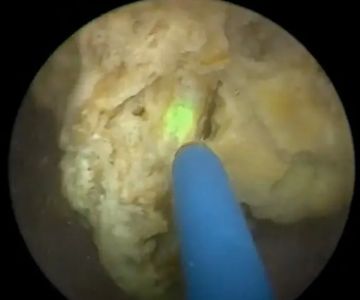Preparing Your Pet for Surgery: A Guide for First-Time Pet Owners
As a first-time pet owner, the idea of your beloved pet undergoing surgery can feel overwhelming. I remember when I first had to prepare my dog, Bella, for surgery—she was my first pet, and I was incredibly nervous about everything from the anesthesia to the post-surgery care. It’s perfectly natural to feel a bit anxious about this process, but understanding what to expect and how to properly prepare can help make the experience less stressful for both you and your pet. In this guide, I’ll walk you through everything I’ve learned about preparing your pet for surgery and how to support them through the process.

VCA Arboretum View Animal Hospital, 2551 Warrenville Rd, Downers Grove, IL 60515, USA
See Details1. Understanding Why Your Pet Needs Surgery
The first step in preparing for your pet’s surgery is understanding why the procedure is necessary. Surgery can be recommended for a wide variety of reasons, including spaying or neutering, dental work, removing tumors, or repairing injuries. It’s essential to have an open conversation with your vet about the purpose of the surgery and any potential risks involved. When I had to get Bella’s leg repaired after an accident, I made sure to ask my veterinarian detailed questions about the procedure to ensure I felt comfortable with the plan.
Asking your veterinarian about the surgery will not only give you a clearer picture of what’s involved but will also help you feel more confident in making decisions regarding your pet’s care. Having this understanding is crucial in calming any concerns you might have before the big day.

9057 Gaither Rd, Gaithersburg, MD 20877, USA
See Details2. Pre-Surgery Preparation for Your Pet
Preparation before the surgery is just as important as what happens during and after. There are a few key steps to ensure your pet is ready for their procedure:
2.1 Fasting Before Surgery
One of the most important things your vet will recommend is that your pet fasts for a certain period before surgery. This is especially true for pets undergoing general anesthesia. When I prepared Bella for surgery, I had to withhold her food for 12 hours prior to the procedure to prevent complications with anesthesia. Always follow the vet’s advice on fasting times, as feeding your pet too soon before surgery can lead to risks.
2.2 Pre-Surgical Exam and Blood Work
Before surgery, your veterinarian will likely conduct a pre-surgical examination, including blood tests. These tests help to ensure your pet is in good health and can tolerate the anesthesia. Bella’s vet recommended these tests before her surgery, and it gave me peace of mind knowing that we were catching any underlying health issues beforehand.
2.3 Preparation of Surgery Site
Your vet may also prepare the surgery site ahead of time, which may involve shaving the area and cleaning it thoroughly. If your pet is undergoing a more invasive procedure, the area will be sterilized to minimize the risk of infection. I remember how my vet ensured Bella’s leg was completely sanitized before surgery, which helped me feel more confident about the procedure.
3. Understanding Anesthesia and What It Means for Your Pet
Anesthesia is necessary for most surgeries, and understanding how it works can help alleviate some of your concerns. For first-time pet owners, the thought of your pet being under anesthesia can be a bit daunting. However, anesthesia is very safe when administered by experienced professionals. During Bella’s surgery, the veterinary team closely monitored her vital signs to ensure everything was going smoothly. Most veterinary clinics have state-of-the-art equipment to monitor your pet’s heart rate, breathing, and temperature while they are under anesthesia.
It’s essential to trust your veterinarian’s expertise when it comes to anesthesia. I made sure to ask the vet about the safety protocols they use, which helped me feel assured that Bella was in good hands.
4. Post-Surgery Care: What to Expect
Once your pet’s surgery is over, the real work begins—ensuring that they recover safely and comfortably. While every surgery is different, there are general post-surgery care instructions you can expect:
4.1 Keeping Your Pet Calm and Comfortable
After surgery, your pet will likely be groggy from the anesthesia. It’s important to create a quiet, comfortable space for them to rest and recover. For the first few days after Bella’s surgery, I kept her in a quiet room with soft bedding and plenty of water. Limiting their physical activity is important to prevent any strain on the surgical site. Bella’s vet gave me a specific timeline on how much activity she could handle post-surgery, which helped guide her recovery.
4.2 Monitoring the Surgical Site
One of the most important aspects of post-surgery care is keeping a close eye on the surgical site for signs of infection or complications. Check the area for swelling, redness, or unusual discharge. If you notice any of these signs, it’s crucial to contact your vet right away. I checked Bella’s leg every day and made sure it was clean and dry. The vet had also provided me with instructions on how to clean and dress the area if necessary.
4.3 Pain Management
Most pets experience some pain after surgery, and your veterinarian will likely prescribe pain medication to keep them comfortable. Bella was prescribed pain meds to help with her recovery, and I made sure to follow the vet’s instructions carefully. Pain management is crucial for a smooth recovery, so never hesitate to reach out to your vet if you feel your pet’s pain is not adequately controlled.
5. When to Call the Vet
It’s important to know when to call the vet after your pet’s surgery. If your pet exhibits any signs of distress, such as excessive vomiting, not eating, or extreme lethargy, you should contact your veterinarian immediately. I remember worrying when Bella wasn’t eating for a day, but the vet assured me that it was normal after surgery. However, if you have any doubts or concerns, always err on the side of caution and reach out for professional guidance.
Preparing your pet for surgery may seem daunting, but with the right knowledge and preparation, you can ensure that your pet’s experience is as stress-free as possible. By understanding the process, following pre- and post-surgery instructions, and staying in close contact with your veterinarian, you can provide the best care for your pet during their recovery.
If you're looking for expert veterinary care to help guide you through your pet's surgery, I highly recommend visiting Hidden Brook Veterinary for professional advice and top-notch services to support your pet’s health and recovery.









